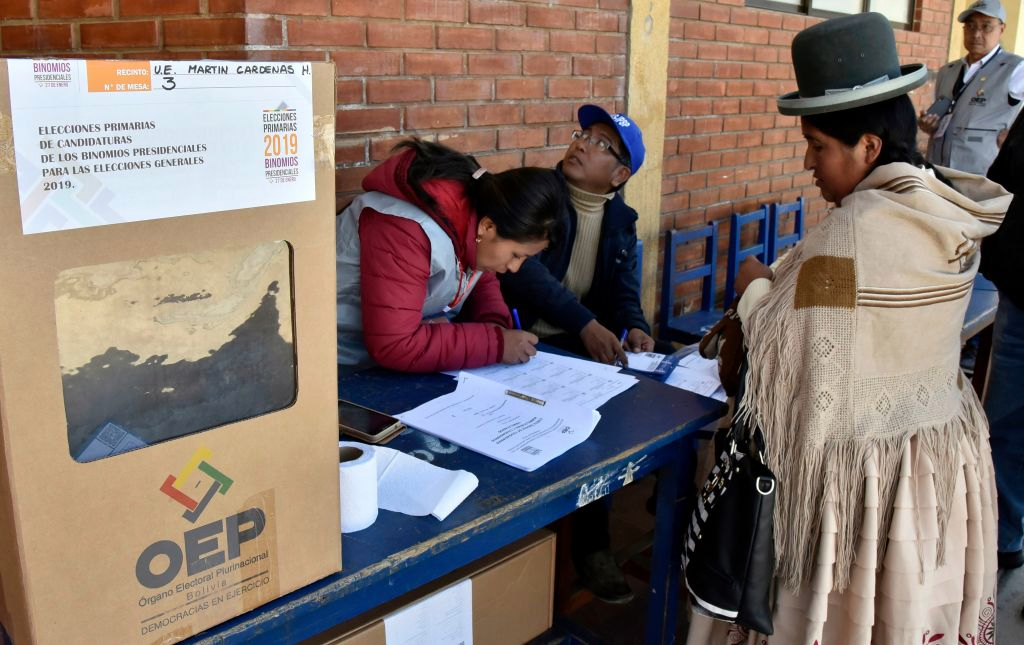RIO DE JANEIRO, BRAZIL – After another two-day delay, Supreme Electoral Court (TSE) Chief Judge Salvador Romero announced the official election results on Friday evening, October 23rd. The presidential candidate for the Movement for Socialism (MAS) party is confirmed as the winner of the first round with a considerable lead. The democratic process of the elections has been fully confirmed by international organizations.
The MAS candidate Luis Arce is the clear winner with 55.1 percent, followed by the Civic Community Alliance (CC) with 28.83 percent. The CC’s presidential candidate, Carlos Mesa, had admitted defeat days ago and claimed the leadership of the opposition for himself. This means that MAS is over 26 percentage points ahead of its immediate rival.
Expressed in votes, over 1,600,000 more people voted for the MAS candidate than for the CC candidate. Arce has accordingly exceeded by far the election result of ex-president Evo Morales last year. At that time, Morales had achieved just over 47 percent, but the elections were annulled on the grounds of alleged electoral fraud.

The regionalist and far-right Luis Fernando Camacho of We Believe (Creemos) from Santa Cruz only achieved 14 percent of the vote for his party. The other two parties remained below the three percent threshold and thus lost their party registration according to electoral law.
Voting in 29 states proved even more pronounced. The MAS emerged as the clear winner with just under 69 percent, ahead of the CC with less than 17 percent. The third strongest party was again Creemos with approximately 12 percent.
These results show that the MAS would have won the elections in the first round even if the two strongest opposition parties had joined forces. This was repeatedly demanded by the anti-MAS group in the run-up to the elections after de facto President Jeanine Áñez withdrew her candidacy. According to the electoral law, a candidate wins in the first round when securing 40 percent of the votes cast with a lead of at least ten percentage points.
A total of 6,483,893 people voted. This means a voter turnout of 88.4 percent. Although voting is compulsory in the country, Romero said this is the second-highest turnout in Bolivia’s history.
This result is even more significant than the first projections. As a result, internationally renowned politicians congratulated the MAS on its election victory earlier on. Luis Almagro, Secretary-General of the Organization of American States (OAS), recognized the newly elected president as early as Monday when the official count had just begun.
Even U.S. Secretary of State Mike Pompeo, who is not particularly sympathetic towards MAS, joined in the congratulations two days later. He expressed his hope “for cooperation in matters of common interest with the democratically newly elected government.”
In their preliminary reports, the various international election observation missions agreed that there was no possibility of electoral fraud and that the voting had taken place peacefully and with no major incidents.
In addition to the president’s direct election, voters also decided on the composition of Bolivia’s Plurinational Legislative Assembly. In the Chamber of Deputies, the MAS achieved 73 of 130 seats and holds the absolute majority. In the Senate, which consists of 36 seats, the MAS has a solid majority of 21, the CC has 11 and Creemos has four seats. The gender distribution in the Senate is remarkable: Of the 36 representatives, 20 are women.
Despite its positive showing, MAS has now lost its two-thirds majority in both chambers, which it held in the preceding legislative period. This means that it must negotiate with the opposition in the event of constitutional amendments, which require a two-thirds majority.
The clear lead and large majority provide the new government with a high degree of legitimacy. Nonetheless, there is still resistance to the election results, particularly from the Santa Cruz department in the eastern lowlands. Thousands of people have been gathering over the past four days to protest against alleged irregularities in the counting of votes. Juan Martín Delgado, leader of the Santa Cruz Youth Union (UJC), on Friday called for a citizen’s strike to begin at midnight on Saturday.
However, the president of the nearby Pro Santa Cruz Committee, Rómulo Calvo, refused to join the call because “it is not the right time”. In his opinion, all legal means must be exhausted first. In addition, a meeting of citizens of Santa Cruz should be held before such measures are taken. Delgado then accused his sister organization of being guilty of “complicity in silence” and of having “betrayed the youth organization before”.
Immediately after the TSE press conference, the president of the Senate, Eva Copa, scheduled the official inauguration of President Luis Arce and his running mate, David Choquehuanca, for November 8th in La Paz. The TSE will issue the certificates of appointment for parliamentarians next Tuesday and for the Presidency on Wednesday. After that, the transition of office must be completed within two weeks.
This means that the de facto government may remain in office until November 11th at the latest. Regional elections must be held within a maximum of 120 days thereafter, during which the governors, mayors, and regional parliaments are elected. The election campaign is therefore proceeding directly into the next round.

